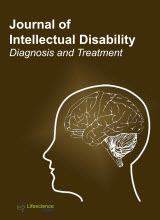jiddt
|
|
Abstract: Children of teenage mothers are at high risk for developmental delays, intellectual and learning disabilities, behavior disorders and school related problems [1]. Early identification and referral into prevention or early intervention programs may ameliorate that risk. Children of teen mothers who are in family childcare may not have access to routine developmental and behavioral screenings that would lead to early identification and referral. Members of an early childhood advisory board collaborated to conduct a screening event using the ASQ-3® and the ASQ:SE® at a local children’s museum for 26 children of teen mothers who had no previous access to developmental screenings. Parents completed the questionnaires while playing with their children at the museum. Nine of the children scored well within the range of typical development and 17 scored at or beyond the cut-off scores on the ASQ-3 and/or the ASQ:SE. Each child who scored at or beyond the cut-off received referrals for evaluation, parent and child programming and/or family support services. When there were concerns, families also received care coordination while all families received activities and a child’s book. The implications for this study suggest that collaborative efforts are effective in providing access to developmental screenings and referral into subsequent services for at-risk young children who are in family childcare settings. Keywords: Screening, development, young children, infants, toddlers, preschool-age, collaboration, teenage parents, at-risk, family childcare.Download Full Article |
|
|
Abstract: To determine the average medical cost incurred for early identification of intellectual and developmental disabilities in children, we retrieved the records of 264 children who had visited our consulting unit from 2005 until the end of March 2012. In the evaluation process, each child took psychological assessments and the parents were provided with solutions to enable the children to overcome their delay in school. As a whole, while the average number of visits did not differ by the diagnosis, the average medical cost differed by the diagnosis. The consultation unit was effective for gradually diminishing the medical costs incurred. Our in-clinic consultation system proved useful for early identification of intellectual and developmental disabilities in children and minimization of the medical costs incurred for the process. Keywords: AD/HD, medical cost, PDD.Download Full Article |
|
|
Abstract: Background:There is an increasing body of evidence that early interventions for children with Autism Spectrum Disorder (ASD) promote a positive development of social interaction. Thus, tools for early detection of ASD are warranted. Aim: Development of, and deciding cut-off-levels for, a new screening tool for ASD, the Observation Scale for Autism (OSA). The OSA was designed to be used at the free health check-up at 30 months, offered to all children in Sweden. Method: The OSA consists of 12 observations and takes less than 10 minutes to use. The performance of the test was investigated by assessing 37 children previously diagnosed ASD, 23 with Down Syndrome (DS) and 26 typically developing children (TD). Results:Children diagnosed with ASD showed statistically significant higher scores in all 12 items compared to TD children, and significantly higher in 10 items compared to the children with DS. Most of the observations in OSA seemed to cover specific symptoms of ASD, but two of the observations were more related to developmental level. The nine most discriminative items for ASD were identified, and among those, a cut-off limit was chosen (≥3 items). Among children with ASD, 34/37 reached the proposed cut off, compared to 0/26 and 4/23 among children in the TD and DS groups, respectively. Conclusion:The results suggest that the OSA discriminates children with ASD from TD children and children with DS. Using the suggested cut off, OSA provides high sensitivity for ASD (92%) with a very low false positive rate. Keywords: Screening, Autism, sensitivity, Intellectual disability, typically developing children.Download Full Article |
|
|
Abstract: Contemporary recommended practices in early childhood assessment strive to gain a holistic picture of child learning and development to inform screening, eligibility, and program planning decisions. These practices have traditionally focused on competencies reflected in developmental domains with limited attention to the approaches-to-learning used to acquire those competencies. In this article, we call for the examination of early childhood constructs that impact a child’s ability to learn and develop, such as executive function (EF), mastery motivation, self-regulation and self-determination, specifically in the infant-toddler period. With EF defined as a wide range of central control processes in the brain that link and categorize information that is discernible in cognitive, motor, and behavioral responses [1], we propose a model of EF as the core construct that drives and unites these learning processes and describe how the model can be applied to Part C early intervention screening, assessment, eligibility determination, and program planning, as well as identify future directions in research and personnel preparation. Keywords: Assessment, early intervention, approaches-to-learning, executive function, eligibility, program planning.Download Full Article |
|
|
Editorial Download Full Article |


